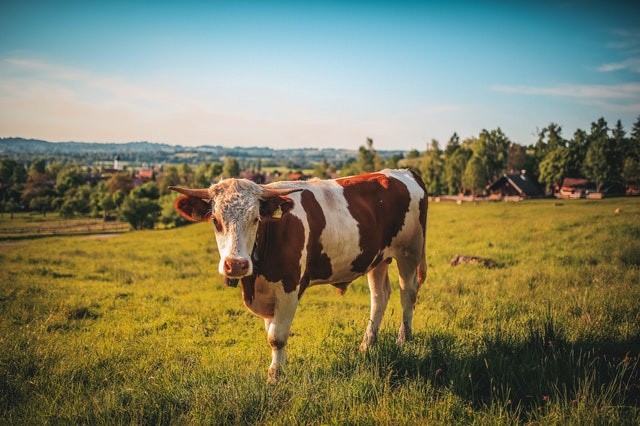More accurate measurements could help in boosting yields and aids the enablement of cleaner farm design. Optical Frequency combs are basically high-tech "rulers" for the measurement of various colors of light; they're essential for producing better atomic clocks and exoplanets hunting, among other things.

Ammonia and Methane Emissions
Now experts at the National Institute of Standards and Technology (NIST), partnering with scientists at Kansas State University (KSU), have initiated the "agricomb," which is an optical frequency comb that takes a measurement of the gassy discharges from cow burps - the first frequency comb usage in an agricultural background.
One day the tool could help in boosting agricultural production and create enablement for the design of cleaner farms, according to a current paper released in the journal Science Advances.
The so-called "digestive processes" of livestock give account for the US largest source of ammonia and methane emissions (The former is a chief greenhouse gas, while NH3 is an atmospheric pollutant,) according to the authors.
Just one cow belches around 220 pounds of methane annually. That is one reason there are calls in some quarters to totally reduce the consumption of beef.
However, some experts -remarkably Frank M. Mitloehner of the University of California, Davis - have highlighted that cows and other ruminants nonetheless presently account for only 4 percent of all greenhouse gases manufactured in the US, all thanks to healthier breeding, nutrition, and genetics, among other advances.
Also Read: The Beef Burden: How Cows Greatly Hurt the Environment
Optical Frequency Combs
Having the ability to make very accurate measurements of ammonia and methane emissions could aid in the improvement of matters even more. But that can be a challenge, as stated by the NIST/KSU authors, due to the fact that management practices can differ widely from farm to farm.
And cattle in grazing systems are not evenly distributed, which can reduce conventional optical sensor's usefulness. Ammonia concentrations are particularly hard to measure accurately with conventional sensors. That's where the help of the new optical frequency "agricomb" comes in.
Optical frequency combs are made with lasers, which discharge regular, closely spaced, brief pulses of light of various colors. Over time, the features of that light are changed to frequency numbers to produce something that resembles a comb. Every "tooth" in the comb is a distinct color (frequency) of light, based on how rapidly the light wave oscillates.

Custom-made Astrocomb
Oscillations that are faster produce larger frequency numbers, so blue light waves will oscillate rapidly than red waves, for example, with green and yellow waves falling somewhere in between.
The teeth play the role of a ruler to measure various colors of emitted light. Over the last two decades, NIST scientists have developed various advances in optical frequency combs - plus an astrocomb that is custom-made introduced in 2018 to accurately measure the frequencies of starlight.
The astrocomb is a major tool in the hunt for exoplanets which is in progress, since one way to look for planets orbiting distant stars is to search for tiny periodic variations, or wobbles, in the obvious colors of starlight over time.
Related Article: Red Seaweed Reduces Methane 'Belching' by Cattle, Could Help Alleviate Climate Change
For more news, updates about cows and similar topics don't forget to follow Nature World News!
© 2026 NatureWorldNews.com All rights reserved. Do not reproduce without permission.





